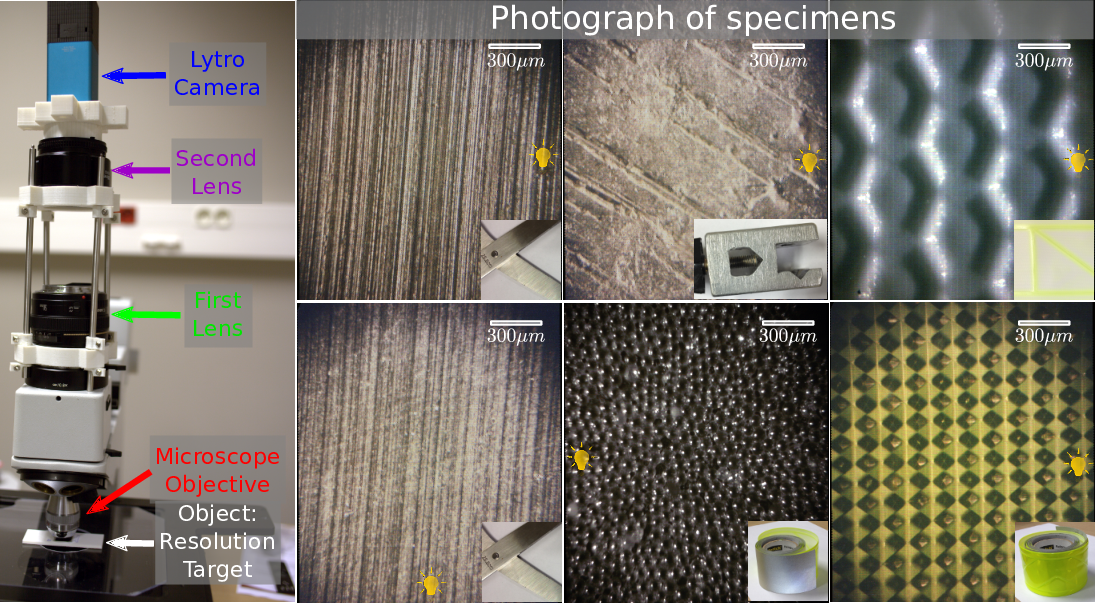Section:
New Results
From Acquisition to Display
Lytro Microscope
Figure
10. Light field microscopy with a consumer light field
camera. Light fields can be beneficial for microscopic
applications because they provide 3D information on a
sample. Access to the technology, has, however, been limited by
the need for custom-building the device. Our work enables an
easy entry-level experimentation with the technology. (left)
Light field microscope with a consumer light field
camera. (right) Example specimens photographed with our system.
|
|
We explore [22] the use of inexpensive consumer light-field camera
technology for the purpose of light-field microscopy. Our experiments
are based on the Lytro (first generation) camera. Unfortunately, the
optical systems of the Lytro and those of microscopes are not
compatible, leading to a loss of light-field information due to
angular and spatial vignetting when directly recording microscopic
pictures. We therefore consider an adaptation of the Lytro optical
system. We demonstrate that using the Lytro directly as an ocular
replacement, leads to unacceptable spatial vignetting. However, we
also found a setting that allows the use of the Lytro camera in a
virtual imaging mode which prevents the information loss to a large
extent. We analyze the new virtual imaging mode and use it in two
different setups for implementing light-field microscopy using a Lytro
camera. As a practical result, we show that the camera can be used for
low magnification work, as e.g. common in quality control, surface
characterization, etc. (cf. Figure 10 ) We achieve a maximum spatial resolution of
about 6.25 micrometers, albeit at a limited SNR for the side views.



